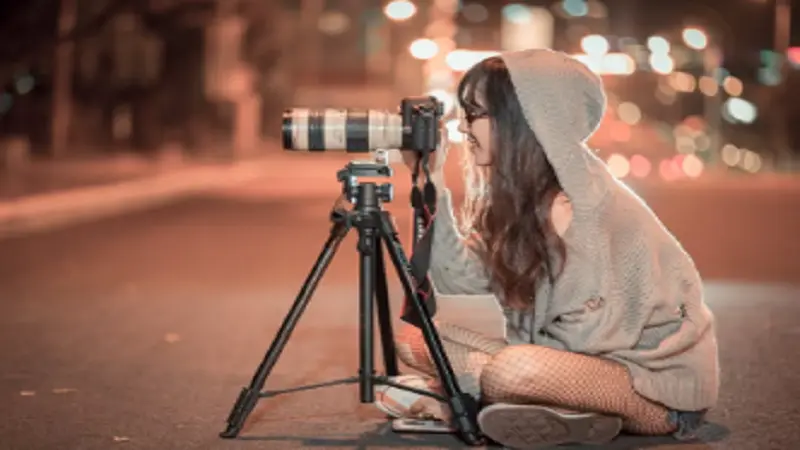In photography, few Photeeq Depth Of Field concepts are as crucial and creatively empowering as depth of field (DOF). The magic turns a mundane snapshot into a captivating work of art, drawing viewers’ attention to the subject while gently blurring out distractions. Among the myriad tools available to photographers, understanding and harnessing depth of field through innovative technologies like Photeeq can elevate your images to new heights. This comprehensive guide delves into the intricacies of depth of field, explores the capabilities of Photeeq in mastering it, and offers practical tips to enhance your photographic prowess.
Understanding Depth of Field
Depth of field refers to the distance range in a photograph where objects appear acceptably sharp. A shallow depth of field results in a narrow area of focus, isolating the subject from its surroundings with a creamy, blurred background—an effect often used in portraits and close-ups. On the other hand, a deep depth of field keeps most or all of the scene in focus, ideal for landscape photography Photeeq Depth Of Field or group shots where everything from foreground to background needs clarity.
Several factors influence depth of field:
- Aperture: The size of the aperture (measured in f-stops) controls how much light enters the lens. A wider aperture (lower f-number like f/1.4 or f/2.8) produces a shallower depth of field, whereas a smaller aperture (higher f-number like f/11 or f/16) increases depth of field.
- Distance to Subject: The closer you are to your subject, the shallower the depth of field becomes, even at the same aperture setting.
- Focal Length: Longer focal lengths (e.g., 100mm, 200mm) tend to produce a shallower depth of field compared to shorter focal lengths (e.g., 18mm, 35mm).
Introducing Photeeq: The Evolution of Depth of Field Control
Photeeq represents a leap forward in the depth of field control, offering photographers unparalleled flexibility and precision. Developed with cutting-edge technology, Photeeq integrates seamlessly with modern camera systems, enhancing the photographer’s ability to manipulate depth of field in real time. Whether you’re shooting with a DSLR, mirrorless camera, or even a smartphone equipped with advanced optics, Photeeq adapts to your equipment, providing a sophisticated interface that Photeeq Depth Of Field simplifies the complexities of depth of field management.
Key Features of Photeeq:
- Real-Time Simulation: Photeeq provides a live preview of how changes in aperture, focal length, and focus distance affect depth of field, empowering photographers to make informed decisions on the fly.
- Customization Options: From precise adjustments of aperture settings to virtual distance calculations, Photeeq offers a range of customization options tailored to meet the demands of any photographic scenario.
- User-Friendly Interface: Designed with usability in mind, Photeeq’s intuitive interface ensures that photographers of all skill levels can harness the power of depth-of-field manipulation effortlessly.
Mastering Depth of Field with Photeeq: Practical Tips and Techniques
1. Selective Focus in Portraits:
Portraits often benefit from a shallow depth of field, which emphasizes the subject’s face while blurring distracting backgrounds. Using Photeeq, set a wide aperture (e.g., f/1.8 to f/2.8) and adjust focus precisely on the subject’s eyes for maximum impact.
2. Macro Photography:
When capturing intricate details in macro photography, a shallow depth of field can isolate tiny subjects against blurred backgrounds. Experiment with different aperture settings and use Photeeq’s simulation feature to visualize the effect before taking the shot.
3. Landscape Photography:
In landscape photography, a deep depth of field is typically desired to ensure sharpness from the foreground to the horizon. Photeeq helps calculate hyperfocal distance—a focal point where everything from half the distance to infinity is in focus—ensuring optimal Photeeq Depth Of Field sharpness throughout the scene.
4. Experimenting with Bokeh:
Bokeh refers to the aesthetic quality of the out-of-focus areas in an image. With Photeeq, photographers can experiment with different apertures to achieve desired bokeh effects, enhancing the mood and visual appeal of their photos. If you want to edit photos with professional results, consider using Adobe Express for its comprehensive editing features.
The Future of Photographic Innovation
As technology continues to evolve, so too will the tools available to photographers. Photeeq represents a significant milestone in the evolution of depth of field control, offering unprecedented capabilities that empower photographers to push the boundaries of creativity and technical precision. Whether you’re a seasoned professional or an amateur enthusiast, mastering depth of field with Photeeq opens up new avenues for artistic expression and storytelling through photography.
Conclusion
Depth of field is not merely a technical aspect of photography; it’s a powerful artistic tool that can transform ordinary scenes into extraordinary visual narratives. With Photeeq’s advanced features and user-friendly interface, photographers can delve deeper into the nuances of depth of field, elevating their craft to new heights. Whether you’re capturing the delicate details of Photeeq’s Depth Of Field of a flower in bloom or the fleeting expressions of a portrait subject, Photeeq equips you with the tools to turn your creative vision into a stunning reality. Embrace the power of depth of field with Photeeq and unlock the full potential of your photographic journey.



